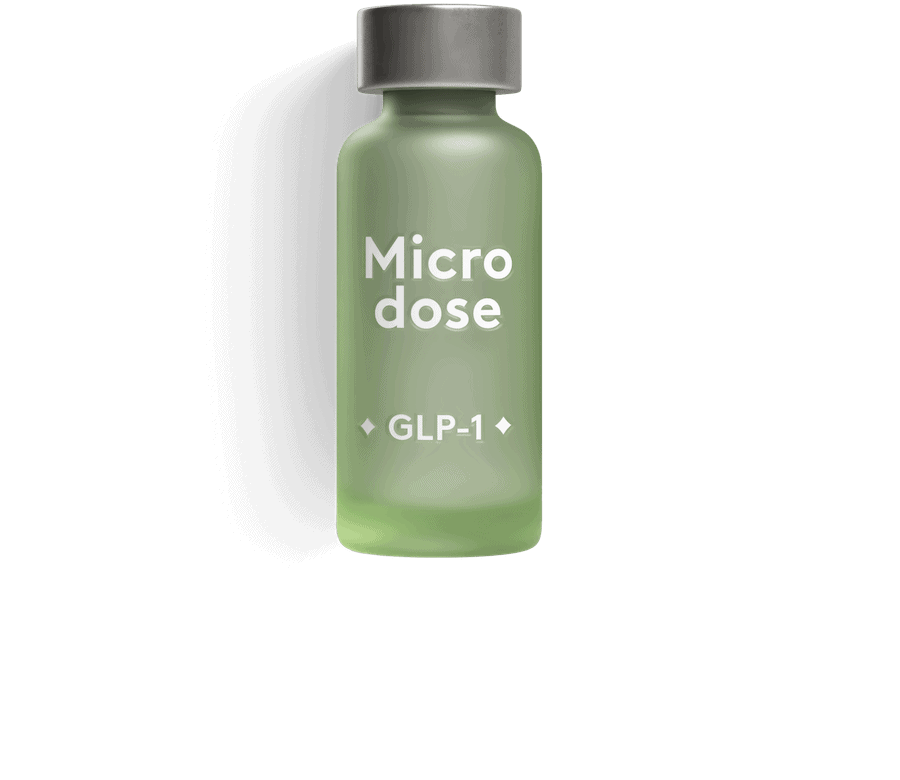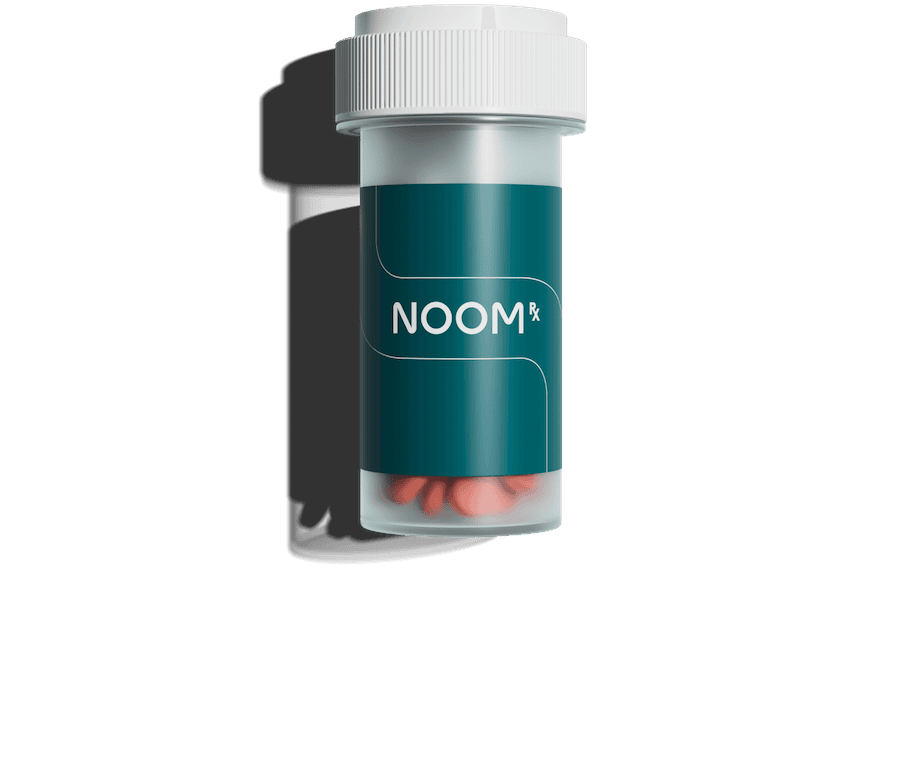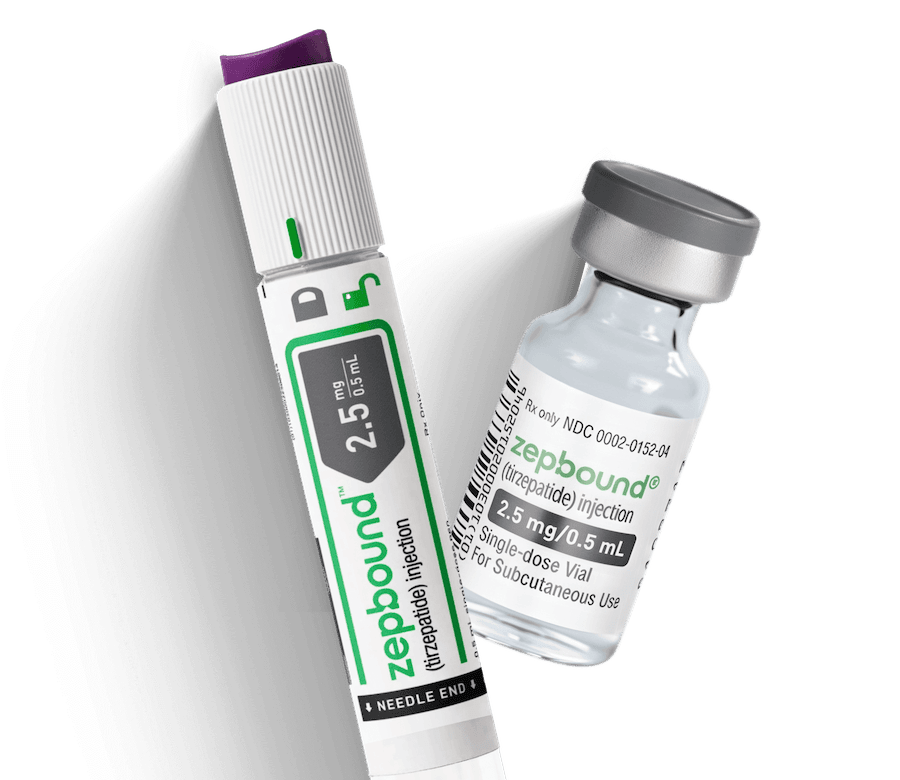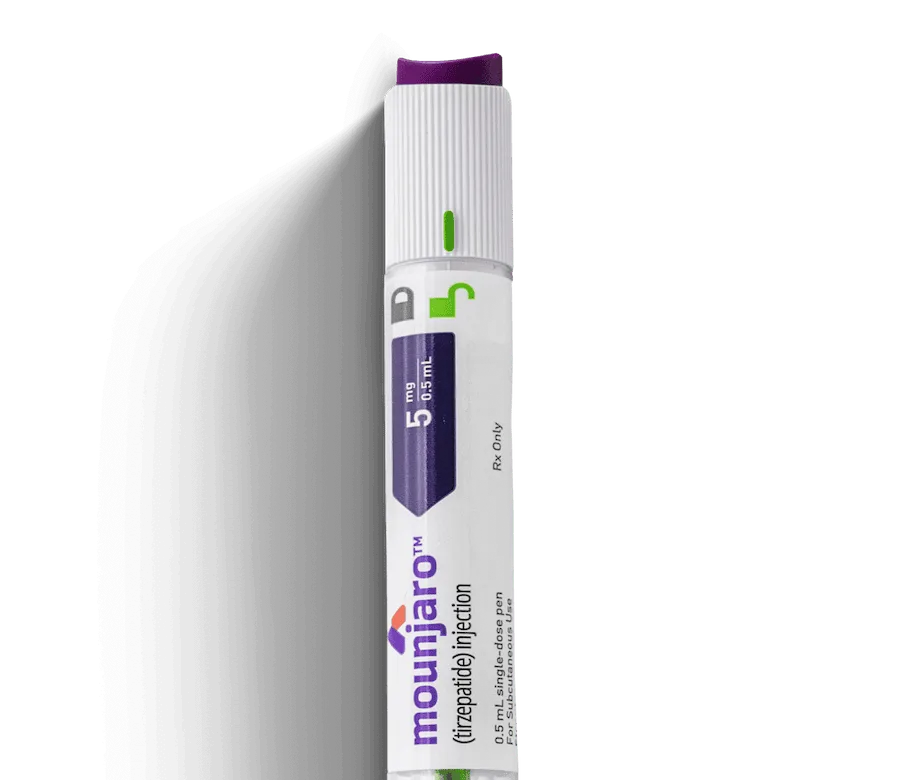- Why Farxiga® causes side effects
- How much weight can you lose with Farxiga®?
- Farxiga®: Common side effects and warnings
- How to manage the side effects of Farxiga®
- Who shouldn’t take Farxiga®?
- Farxiga® vs. other weight loss drugs
- Weight loss potential: Farxiga® vs other medications
- FAQs about Farxiga®
- The bottom line: Weight loss is minimal with Farxiga®
What you’ll learn:
- Farxiga® is a prescription medication used to manage type 2 diabetes. It can also be used to manage heart failure and kidney disease.
- Farxiga® can be prescribed for weight loss off-label. People taking it can lose an average of 6.6% of their body weight.
- Common side effects include more frequent urination, mild dehydration, and a higher chance of urinary tract or yeast infections.
Farxiga® is most often prescribed to help manage type 2 diabetes, protect heart health, and slow the progression of chronic kidney disease. Recently, though, some people have noticed that it can also lead to modest weight loss—sparking interest in taking it off-label for that purpose.
Unlike GLP-1 medications such as Ozempic® or Mounjaro®, Farxiga® works through a completely different pathway. It belongs to a class of drugs called SGLT2 inhibitors, which lower blood sugar by helping the kidneys flush out excess glucose through urine. That sugar loss can translate into some weight reduction.
But there’s a trade-off. Because Farxiga® changes the way your body handles both sugar and fluid, it can come with side effects as your system adjusts.
We’ll break down the most common side effects of Farxiga®, why they happen, how they compare to those from other medications, and what strategies may help you manage them. We’ll also touch on how much weight loss you can realistically expect—and whether Farxiga® is an option worth discussing with your provider.
How Farxiga® affects your body and why it causes side effects
When it comes to weight loss, Farxiga® works very differently from GLP-1 medications like Ozempic®, Wegovy®, Mounjaro®, and Zepbound®. Instead of acting on hormones that curb appetite and slow digestion, Farxiga® lowers blood sugar by helping your kidneys flush excess glucose out through urine. Losing those extra calories can add up over time, leading to modest weight loss.
But the process doesn’t stop at sugar. As your kidneys clear out glucose, they also remove water and salt. That’s why many people notice they’re urinating more often or feeling thirstier in the first weeks of treatment. This fluid shift explains common side effects such as mild dehydration, increased urination, and dizziness.
The higher concentration of sugar in urine can also create the perfect environment for urinary tract infections (UTIs) or yeast infections, especially in the first few months.
Next, we’ll walk through the most common side effects in more detail, how to manage them, and when it’s important to call your doctor.
How much weight can you lose with Farxiga®?
Since Farxiga® isn’t technically a weight loss medication, most of the weight loss data we have comes from studies in people with type 2 diabetes, so results may vary if you’re taking it primarily for weight management.
That said, weight loss can be a positive effect for some people. Here’s what the research shows:
- 5 mg dose: People lost an average of 6.6% of their starting body weight after roughly 2 years. About half of that loss happened by week 27, so results build gradually over time.
- 10 mg dose: People lost an average of 4.1% of their starting body weight after about 2 years, with half of that loss typically seen by week 20.
The most effective dose for weight loss overall appears to be 5 mg, though weight loss was faster with the 10 mg dose.
Farxiga® also works best when a person eats fewer calories and moves more. In a year-long study, people who took Farxiga® (for diabetes) while following a daily calorie deficit of 500 to 750 calories lost more weight than those who relied on diet alone.
When Farxiga® is combined with other medications like metformin, weight loss can be even more noticeable. Studies show that people with type 2 diabetes using this combination lost about 3 to 6% of their starting body weight over a year.
Farxiga®: Common side effects and warnings
By flushing extra sugar out through your urine, Farxiga® can create an environment where bacteria and yeast grow more easily. As a result, people taking it are more likely to experience the following side effects:
Increased urination
- Why it happens: Because your body is flushing excess sugar through urine, you naturally produce more urine. This can make you feel like you need to go more often, especially when first starting the medication.
- What to do: Stay well-hydrated to prevent dehydration, but try to avoid excess caffeine or alcohol, which can worsen urinary frequency.
Yeast infections
- Why it happens: Farxiga® increases the amount of sugar in your urine, which creates an environment where yeast and bacteria can grow more easily.
- What to do: Good hygiene practices (changing out of sweaty clothes quickly, wearing breathable cotton underwear) may help reduce risk. Over-the-counter antifungal treatments can often clear mild yeast infections, but let your provider know if infections are frequent or severe, as you may need prescription treatment.
Sore throats and runny noses
- Why it happens: Some people on Farxiga® report mild respiratory symptoms, like runny noses or sore throats. While the exact cause isn’t fully clear, it may be related to subtle immune system effects or simply the body adjusting to the medication.
- What to do: These symptoms are usually mild and go away on their own. That said, over-the-counter remedies, like throat lozenges, saline sprays, or acetaminophen for discomfort, can also help, if approved by your doctor.
Some people have also reported experiencing the following common side effects:
- Urinary tract infections
- Back pain
- Nausea
- Dyslipidemia
- Constipation
- Pain in the extremity
- Discomfort with urination
Farxiga® side effects in females
Women taking Farxiga® tend to experience the same side effects overall as men, but some happen more often in women because of biological differences. Knowing what to expect can help you manage these effects early and talk to your doctor if needed.
Here’s a closer look at the most common female-specific side effects:
- Genital yeast infections. Yeast infections are the most common side effect for women taking Farxiga®, affecting about 10 to12% compared with 2 to 4% of men. Symptoms include itching, redness, swelling, and thick white discharge.
- Urinary tract infections. UTIs are slightly more common in women taking Farxiga®, with about 5 to 9% affected. Higher sugar levels in urine can encourage bacteria to grow. Watch for burning when you pee, pelvic pain, cloudy urine, or fever.
Severe side effects and warnings
Although uncommon, Farxiga® can sometimes cause more serious complications. It’s important to know the warning signs so you can get immediate medical attention.
- Serious urinary tract infections (UTIs) – Signs include burning with urination, pelvic or back pain, fever, or blood in the urine. Seek medical attention immediately; untreated UTIs can spread to the kidneys and become dangerous.
- Ketoacidosis – Farxiga® may rarely cause a dangerous buildup of ketones in some people, though this is more likely in those with diabetes or pancreatic problems. Symptoms include nausea, vomiting, stomach pain, tiredness, and difficulty breathing. This is a medical emergency, so seek care immediately if these symptoms appear.
- Dehydration and low blood pressure – Extra fluid loss from increased urination can sometimes lead to dehydration or a sudden drop in blood pressure.
- Low blood sugar (hypoglycemia) – This usually happens only when Farxiga® is taken with insulin or other diabetes medicines. Look for shakiness, sweating, dizziness, fast heartbeat, hunger, or irritability.
- Severe bacterial infections in the genital area – Rare tissue infections can develop in the genital or surrounding area. Warning signs include fever, weakness, pain, swelling, or redness in the genital region. Get immediate medical attention if you suspect a serious bacterial infection.
Rx weight loss, the right way, with Noom
Get access to prescription weight loss medication with Noom.How to manage the side effects of Farxiga®
A few simple daily habits can help you manage the side effects of Farxiga®. Here’s what to do:
- Stay well-hydrated. Farxiga® increases urination, so drinking enough water throughout the day is essential. Look for clear or light-yellow urine as a sign of good hydration. Keeping a water bottle with you can make it easier to sip regularly and prevent dizziness or fatigue caused by dehydration.
- Take your medication at the same time every day. Consistency helps your body maintain steady levels of the medication and makes it easier to spot patterns in any side effects. Most people take Farxiga® in the morning to minimize nighttime bathroom trips.
- Practice good daily hygiene. Gently clean the genital area with mild soap and water, and always wipe from front to back if you are female. This lowers the risk of urinary tract infections and yeast infections, which are more common with Farxiga®.
- Eat balanced meals at regular times. Because Farxiga® removes sugar through urine, consistent meals help keep your energy levels steady. Skipping meals can make fatigue worse for some people.
Who shouldn’t take Farxiga®?
Before starting treatment, your doctor will review your medical history to make sure Farxiga® is safe for you. You shouldn’t take Farxiga® if you have:
- Severe kidney disease or are on dialysis
- Type 1 diabetes
- A history of severe allergic reaction to dapagliflozin or its ingredients
- Active bladder cancer
- Are pregnant or breastfeeding
Comparing Farxiga® side effects to other weight loss drugs
Side effects can look very different depending on which medication you take. Knowing what to expect can help you choose the option that best fits your lifestyle and comfort level.
With Farxiga®, you’re far more likely to notice side effects tied to how it works: helping your kidneys flush sugar out through your urine. Meanwhile, with GLP-1 medications (like Ozempic® or Mounjaro®), you’re more likely to experience gastrointestinal effects because they slow down how quickly food leaves your stomach.
Here’s how Farxiga® compares to other common weight management medications:
| Symptom | Farxiga® (SGLT2 inhibitor) | GLP-1 Medications |
|---|---|---|
| Yeast infections (genital or urinary) | ✅ More common — Extra sugar in urine promotes yeast and bacterial growth. | Rare — Not typically linked to urinary infections. |
| Urinary tract infections (UTIs) | ✅ More common — Higher sugar levels in urine increase risk. | Rare — Not a primary side effect. |
| Increased urination | ✅ More common — Kidneys flush out sugar and water, increasing bathroom trips. | Rare — GLP-1s don’t affect the kidneys this way. |
| Thirst / mild dehydration | ✅ More common — Due to fluid loss with sugar. | Rare — Dehydration usually only from vomiting/diarrhea. |
| Runny nose, sore throat, mild respiratory infections | ✅ Sometimes reported — Mild, less common but documented. | Rare — Not typical. |
| Nausea and vomiting | Rare — Not a major mechanism. | ✅ More common — Stomach empties slowly, especially at dose changes. |
| Diarrhea | Rare — Not a typical effect. | ✅ More common — Slowed digestion can disrupt bowel habits. |
| Constipation | Rare. | ✅ More common — Seen as digestion slows. |
| Abdominal pain or bloating | Rare. | ✅ More common — Gas, cramping, discomfort from delayed emptying. |
Weight loss potential: Farxiga® vs other medications used for weight loss
While Farxiga® isn’t primarily a weight-loss drug, it can cause some weight loss. Here’s a quick look at how much weight loss you might expect with Farxiga® versus other commonly prescribed medications.
| Medication | Average % of body weight lost |
|---|---|
| Farxiga® (dapagliflozin, 5 mg) | 6.6% |
| Zepbound® (tirzepatide, 15 mg) | 21% |
| Wegovy® (semaglutide, 2.4 mg) | 15% |
| Qsymia® (phentermine/topiramate ER, 15 mg/92 mg) | 10% |
| Xenical® (orlistat, 120 mg) | 8.5% |
Frequently asked questions about Farxiga®
Here are answers to some of the most common questions people ask about Farxiga®.
How quickly do you lose weight on Farxiga®?
Most people notice initial water weight loss within the first few weeks of taking Farxiga®, followed by gradual fat loss over time. The weight loss tends to be steady.
How long do Farxiga® side effects last?
Many common side effects, like increased urination, thirst, or mild dehydration, often improve within the first few weeks as your body adjusts to the medication. More persistent side effects, like urinary tract infections, may need treatment and can last until properly addressed. If side effects don’t improve after a few weeks or get worse, it’s important to talk with your healthcare provider about adjusting your treatment plan.
Which is better, Wegovy® or Farxiga®?
The “better” choice depends on your specific health needs and goals since these medications work differently. Wegovy® typically leads to more significant weight reduction, with people experiencing an average of 15% loss from their starting weight.
Their side effects also differ. When people experience side effects with Wegovy®, they’re most likely to note gastrointestinal symptoms like nausea and vomiting, while Farxiga® more commonly leads to urinary tract or yeast infections.
Pricing can also be a factor. Wegovy® has a list price of over $1,350 per month, though people can get it for $499 through the NovoCare Pharmacy. The list price of Farxiga® is about $600 per month, but through GoodRx, it will cost less than $300. Neither is likely to be covered by insurance for weight loss.
Is there a generic for Farxiga®?
Yes. A generic version of Farxiga® called dapagliflozin is now available in the United States. But even though it is a generic, discounts on the branded version can mean that generic Farxiga can cost about the same or even more.
Subscribe to Noom Digest
With the latest Noom news, insightful articles, and a healthy dose of inspiration, Noom Digest might just become your favorite newsletter.The bottom line: Weight loss is minimal with Farxiga®
Farxiga® works differently from GLP-1 medication and isn’t typically prescribed for weight loss, even off-label. Instead of acting on appetite hormones, it helps your kidneys flush excess sugar from your body through urine. That unique mechanism can lead to modest weight loss—but it also explains the most common side effects, such as increased urination, mild dehydration, and a higher risk of urinary tract or yeast infections.
While these side effects can sound discouraging, most are mild and manageable once your body adjusts. Staying hydrated, maintaining good hygiene, and tracking any changes in urinary health can make a big difference. If symptoms like dizziness, recurring infections, or extreme thirst persist, it’s worth talking with your provider about adjusting your dosage or exploring other options.
Overall, though, while Farxiga® can lead to some weight loss, the effect is generally modest compared to GLP-1s or other weight loss medications. Most people lose only a small percentage of their body weight (4 to 7%), and results can vary depending on diet, exercise, and other health factors.
If you’re interested in exploring weight loss medication, see if you qualify for Noom Med. You’ll be connected with a clinician who can assess your medication needs and prescribe one if needed. The program combines medical expertise with psychology-based coaching to help you manage medications safely, make sustainable lifestyle changes, and feel more in control of your health journey.
Why you can trust us
At Noom, we’re committed to providing health information that’s grounded in reliable science and expert review. Our content is created with the support of qualified professionals and based on well-established research from trusted medical and scientific organizations. Learn more about the experts behind our content on our Health Expert Team page.













